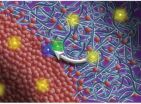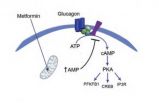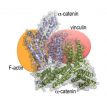(Press-News.org) AURORA, Colo. (Jan. 7, 2013) – New research from the Children's Outcomes Research Program at Children's Hospital Colorado shows that timely reminders by state or local health departments are more effective at increasing immunization rates among preschool children than those from primary care practices.
The study, published December 13 in the American Journal of Public Health, underscores the importance of partnerships between state and county health departments and primary care practices to keep children up-to-date on recommended vaccines.
"Immunizations provide us with the opportunity to prevent most of the diseases that killed so many children in the past. But the job of making sure all children receive immunizations in a timely manner is complicated and requires systems to identify who is not up-to-date and to generate reminder letters, postcards or telephone messages," said Allison Kempe, MD, MPH, director of Children's Outcomes Research at Children's Hospital Colorado and primary author of the study. "Many primary care providers don't have such systems in place and don't have the time or staff to conduct recall for immunizations at their practices. Our study shows that practices and public health departments working together will be much more successful in recalling children who need vaccinations."
One of the nation's health goals, as outlined in Healthy People 2020, is to increase by 80 percent the proportion of children aged 19 to 35 months who receive all recommended vaccines. In 2009, just 44.3 percent of those children received all recommended vaccines.
"Vaccination is recognized as one of the greatest public health achievements of the 20th century, reducing the incidences of many common and fatal diseases by up to 99 percent," Kempe said. "Timely immunization is vital for keeping kids healthy and reducing unnecessary costs for Colorado."
Kempe said reminding parents about upcoming vaccines or recalling them for overdue vaccines has proven to be among the most effective ways of raising immunization rates.
"If reminder or recall messages can be generated for entire populations within a county by the state and county health departments, this unburdens the primary care practice and is much less expensive overall," Kempe said. "It also has the advantage of reaching children who do not have a usual source of primary care. Our data from surveys of both parents and providers suggest that there is strong support for this approach."
The Community Preventive Services Task Force recommends the use of reminder/recall for increasing immunization rates. Current national data suggest that only 16 percent of providers are doing any type of reminder/recall for immunizations. The reasons for this include competing demands, staff turnover, costs related to mailings or telephone call reminders and the lack of computerized systems identifying who need immunizations.
There is increased interest in determining whether reminder/recall efforts might be more feasible and less costly to conduct centrally by public health departments using a regional or state Immunization Information System.
The study's authors conducted a cluster-randomized trial involving children 19-35 months in need of immunizations in eight rural and six urban Colorado counties. In population-based recall counties, recall was conducted centrally using the Colorado Immunization Information System (CIIS). In practice-based recall counties, practices were invited to attend CIIS training and offered financial support for mailing.
Six months after recall, they compared the percentage of children who became up-to-date on vaccines and found significant differences. Among the 32,125 children needing immunizations, 18.7 percent became up-to-date in population-based recall versus 12.8 percent in practice-based recall. Population-based recall was also more cost effective, with $215 ($17 per child brought up-to-date) in costs versus $1,981 ($62 per child brought up-to-date) in practice-based recall.
"This trial supports consideration of a new paradigm in the way reminder/recall for immunizations should be conducted in this country," Kempe said. "We think the most successful approach is a truly collaborative one between practices, Health Departments and the State Immunization registry."
###
Kempe is a Professor of Pediatrics at the University of Colorado School of Medicine. She is Director of the Children's Outcomes Research Program, Children's Hospital Colorado and of the Center for Research in Implementation Science and Prevention (CRISP) at the University of Colorado. She has been a health services researcher for 25 years with a major focus on immunization delivery for children and adolescents.
Faculty at the University of Colorado School of Medicine work to advance science and improve care. These faculty members include physicians, educators and scientists at University of Colorado Hospital, Children's Hospital Colorado, Denver Health, National Jewish Health, and the Denver Veterans Affairs Medical Center. Degrees offered by the CU School of Medicine include doctor of medicine, doctor of physical therapy, and masters of physician assistant studies. The School is located on the University of Colorado's Anschutz Medical Campus, one of four campuses in the University of Colorado system.
Timely reminders boost childhood immunizations rates
2013-01-07
ELSE PRESS RELEASES FROM THIS DATE:
Racial essentialism reduces creative thinking, makes people more closed-minded
2013-01-07
New research suggests that racial stereotypes and creativity have more in common than we might think.
In an article published in Psychological Science, a journal of the Association for Psychological Science, researcher Carmit Tadmor of Tel Aviv University and colleagues find that racial stereotyping and creative stagnation share a common mechanism: categorical thinking.
"Although these two concepts concern very different outcomes, they both occur when people fixate on existing category information and conventional mindsets," Tadmor and her colleagues write.
The researchers ...
New path to more efficient organic solar cells uncovered at Berkeley Lab's advanced light source
2013-01-07
Why are efficient and affordable solar cells so highly coveted? Volume. The amount of solar energy lighting up Earth's land mass every year is nearly 3,000 times the total amount of annual human energy use. But to compete with energy from fossil fuels, photovoltaic devices must convert sunlight to electricity with a certain measure of efficiency. For polymer-based organic photovoltaic cells, which are far less expensive to manufacture than silicon-based solar cells, scientists have long believed that the key to high efficiencies rests in the purity of the polymer/organic ...
How the kilogram has put on weight
2013-01-07
Post-Christmas and most of us are feeling the over-indulgence. But take heart - experts at Newcastle University, UK, have shown even the kilogram itself has put on weight. Using a state-of-the-art Theta-probe XPS machine – the only one of its kind in the world – the team have shown the original kilogram is likely to be tens of micrograms heavier than it was when the first standard was set in 1875.
And they say a suntan could be the key to helping it lose weight.
The original kilogram – known as the International Prototype Kilogram or the IPK – is the standard against ...
New antimatter method to provide 'a major experimental advantage'
2013-01-07
Researchers have proposed a method for cooling trapped antihydrogen which they believe could provide 'a major experimental advantage' and help to map the mysterious properties of antimatter that have to date remained elusive.
The new method, developed by a group of researchers from the USA and Canada, could potentially cool trapped antihydrogen atoms to temperatures 25 times colder than already achieved, making them much more stable and a lot easier to experiment on.
The suggested method, which has been published today, 7 January 2013, in IOP Publishing's Journal of ...
Most-used diabetes drug works in different way than previously thought
2013-01-07
PHILADELPHIA - A team, led by senior author Morris J. Birnbaum, MD, PhD, the Willard and Rhoda Ware Professor of Medicine, with the Institute for Diabetes, Obesity, and Metabolism, Perelman School of Medicine, University of Pennsylvania, found that the diabetes drug metformin works in a different way than previously understood. Their research in mice found that metformin suppresses the liver hormone glucagon's ability to generate an important signaling molecule, pointing to new drug targets. The findings were published online this week in Nature.
For fifty years, one ...
Genetic mystery of Behcet's disease unfolds along the ancient Silk Road
2013-01-07
Researchers have identified four new regions on the human genome associated with Behcet's disease, a painful and potentially dangerous condition found predominantly in people with ancestors along the Silk Road. For nearly 2,000 years, traders used this 4,000-mile network linking the Far East with Europe to exchange goods, culture and, in the case of the Silk Road disease, genes. National Institutes of Health researchers and their Turkish and Japanese collaborators published their findings in the Jan. 6, 2013, advance online issue of Nature Genetics.
Named for the Turkish ...
From the Amazon rainforest to human body cells: Quantifying stability
2013-01-07
As they typically result from severe external perturbations, it is of vital interest how stable the most desirable state is. Surprisingly, this basic question has so far received little attention. Now scientists of the Potsdam Institute for Climate Impact Research (PIK), in a paper published in Nature Physics, propose a new concept for quantifying stability.
"Up to now, science was able to say if a complex system is stable or not, but it wasn't able to properly say how stable it is," says Peter J. Menck, lead author of the paper. The proposed concept is the first to fill ...
A new approach to assessing future sea level rise from ice sheets
2013-01-07
The study, published today in Nature Climate Change, is the first of its kind on ice sheet melting to use structured expert elicitation (EE) together with an approach which mathematically pools experts' opinions. EE is already used in a number of other scientific fields such as forecasting volcanic eruptions.
The ice sheets covering Antarctica and Greenland contain about 99.5 per cent of the Earth's glacier ice which would raise global sea level by some 63m if it were to melt completely. The ice sheets are the largest potential source of future sea level rise – and ...
The pain puzzle: Uncovering how morphine increases pain in some people
2013-01-07
Quebec City & Toronto, January 6, 2013—For individuals with agonizing pain, it is a cruel blow when the gold-standard medication actually causes more pain. Adults and children whose pain gets worse when treated with morphine may be closer to a solution, based on research published in the January 6 on-line edition of Nature Neuroscience.
"Our research identifies a molecular pathway by which morphine can increase pain, and suggests potential new ways to make morphine effective for more patients," says senior author Dr. Yves De Koninck, Professor at Université Laval in ...
New study defines the long-sought structure of a protein necessary for cell-cell interaction
2013-01-07
JUPITER, FL, January 6, 2012 – Scientists know that cells in all higher organisms cells need to bind to each other for the development, architecture, maintenance and function of tissues. Mysteries have remained, however, about exactly how cells manage this feat.
Scientists from the Florida campus of The Scripps Research Institute (TSRI) have now solved part of this puzzle by defining the structure of a protein known as α-catenin, which is essential to this process.
The work was published online ahead of print on January 6, 2012, by the journal Nature Structural ...


